Blog #1 : My Definition Of Being Alone
Blog #1 : my definition of being alone
I should have started this, this week, but today I feel like I should write this down. Or at least write it here so I don't feel alone. And that is my problem, I guess. Going to a small college was supposed to be a good thing for me, a way to make friends. And I did, for the first two weeks I came to Wells. But they promised we all would go out to eat, and they all drove off without me, texting me 'Sorry'. Did I mention that we all live in the same floor? As if I didn't have enough problems, today, a Thursday, November 1st, my stupid teacher, who's only job is to ease freshmen into the stages of college. Whatever that means. Anyway, he asked me, flat out in class, if 'don't you have friends?' Leaving the rest of the class to snicker and whisper just pound enough for me to hear, answer for me, 'No.' I assured my mother that I would be fine like this, but I'm not. That I'm here for my education and that's that, but that's just an excuse, and a dumb one at that. I feel like I haven't left the Bronx. Cause that's where I'm from, and if you don't have a mean face, you look vulnerable, and my face hasn't been like that in four years. The four years I've been in high school. But I don't think I've let it go. And that may be my problem, having a stone face.

More Posts from Arieso226 and Others
Santa Muerte
NO. 1
A skeletal figure dressed in robes or dressed in the virgin’s shroud, Santa Muerte is both the Grim Reap-ress and the Angel of Mercy. She is the personification of death, and her full title, Nuestra Señora de la Santa Muerte as she is well known as, brings an ambiguous and malleable identity that is associated with healing, protection, and safe delivery to the afterlife by her devotees, as her following, especially in 21st century is being celebrated all over South America, but especially Mexico City to the United States and Canada.

NO. 2
Even though Christian missionaries and leaders condemned the religion, Santa Muerte ‘‘offers hope to a society threatened with hopelessness. In the colorful barrios of Mexican culture, the figure of Death is ubiquitous. With the lure and dangers of narco-culture, the violence among competing youth gangs, the haunting realities of an economy in collapse, and the gravel fight to survive in a Tepito marketplace; Mexicans face the reality of death on a daily basis. Santa Muerte, the image of death, protects them from uncertainties in their everyday lives. When Death is the only guarantee, it seems like Death is the only one to be trusted.’’ The worship of Santa Muerte began in the mid-20th century and was clandestine until the 1990s, were most prayers and other rites have been performed traditionally at home. Now in the 21st century, worship has become a more public thing. Santa Muerte has a male counterpart in the U.S, called the skeletal folk saints San La Muerte of Paraguay and Rey Pascual of Guatemala.

NO. 3
So, what caused the worship of Santa Muerte to become a massive, worldwide following? Drug violence, for one, and loss of faith in Christianity. ‘‘Former Mexican president Felipe Calderon’s declaration of war on the cartels in 2006 was received with praise by North American politicians, as in their view, it seemed that the Mexican government was finally taking a strong stand against the cartels and that there would be a swift resolution to the social problems associated with drug trafficking. This open war declared on the cartels resulted in an escalation of drug violence and forced several dramatic changes in the safety of Mexico and its already chaotic social scene. Military personnel, paramilitary groups, and the cartels have been fighting for control of the country and have created a state of panic in the border towns and beyond. The panic and violence in the north have begun to gradually make it’s way south and reach areas that were once ‘safe’. According to the BBC from 2006 to 2012, more than 50,000 individuals have died from drug-related violence. Amidst the drug-related instability, the once strong and influential Mexican Catholic Church has been losing credibility, support, and members. The loss of faith in the Catholic Church could be caused by many factors: general pessimism, individuals searching for other forms of faith, and the result of the church’s support for governing political parties.’’

NO. 4
Who is Santa Muerte? Anthropologists and historians J. Katia Perdigon Castaneda and R. Andrew Chestnut agree that the veneration of Santa Muerte is a combination of Catholic imagery and rituals from Meso-American pre-Hispanic gods and rituals. There is a common list of names for the goddess, such as Mi Nina, (My little girl), La Nina Bonita (the Pretty Girl), La Madrina (the Godmother), and Mi Amor (My Love)—adoring names that tighten the relationship between devotee and saint. There are darker allegations like Senora de la Sombras (Lady of the Shadows) or La Negra (the Black Lady). There is also La Hermana Blanca (The White Sister) and Hermana de la Luz (Sister of the Light). She is celebrated on the Day of the Dead, November 1st and 2nd. better known as Dia De los Muertos.

In case anyone missed this VERY DISTURBING segment last night.
PEGASUS

Whenever someone tries to claim that evolution is a lie, I send them a picture of platybelodon.

1. It’s an excellent example of transitional evolution.
2. It’s a mess who would intentionally do this and why
3. It makes them piss themselves a little.
“Evolution is just a theory-”











Mean World Syndrome
NO. 1
Mean World Syndrome is a theory the sociologist George Gerbner, creator of the Cultural Indicator’s Project, where three quarters of Americans believe in high level of crime, even though statistics show it is low. In the media, there is too much sex and violence, more so than the average person will ever see a day in their lives, and it has become repetitive, too routine, as the storytelling of violence seem ‘normal’. Since 1995, the demand for guns to ‘protect themselves’ has been at an all time high, and so is the fear, fear that everyone in the world is a suspect. But most importantly, is the image of the bad guys coming to get them. 2/3 of Americans get their information from the media, mostly the news, which creates negative stereotypes of minorities, who are seen as violent and aggressive.
NO. 2 Take for instance, Latina’s, who make up 15% in population in America, are portrayed by the media as aggressors, seen as ‘rapists and gangbangers’ or ‘murderers’. They are also the subject of illegal immigration, which all together creates dehumanizing effects. Then, there’s the vilification of Arabs and Muslims, as bloodthirsty terrorists, that are linked to violence and terror, and the subject of torture/ing of these people is ‘okay as long as it’s a good guy doing it’’. 39% of Americans actually believes that American-born Muslims are not loyal to the country’s ideals, and so not loyal to them. And finally, African-Americans are twice as likely to be seen as perpetrators. In the media, it is harmful showing black people as great middle/class, successful people, then as violent and aggressive in the next slide, as if to say some people choose that type of lifestyle, that they are simply a product of their environment. White people are five times more than likely to be criminalized by whites than black people, yet it’s not white people being shown almost everyday on the news for braking crimes.
The result of all this is the active fear in everyday Americans that makes us less likely to be compassionate, and more hardened to anyone and everyone. It also increases a high demand for national security, and believing that we have to lock these ‘criminals in cages where they belong.’
Cultivation Theory is the examination of the long term effects of television. Media cultivates a set of values, meanings, expectations, understanding, etc. which is the culture now in the modern century. Mass media replacement of community-based storytellers, it advances corporate interests (increasing profits and sales) since Americans spend a lot of time with the media. The effects are becoming more systemic and all encompassing. We need to start asking questions, like who is being represented in the media, who is the victim, and who is in the cast, and what are their fates. Who is generally casted as the good guy, and who is casted as the bad guy. We can look to the Media Database (IMDb) to see who is making the cultural object, and what is the main subject. Mean World Syndrome relates to this theory, through intersections of race, gender, ethnicity, criminal justice and the international border. We need to understand who is creating these TV shows/films, since America has such a global reach, it attracts the largest audience. Sociologists are not condemning media, but the constant repetition of ‘happy violence’—where in the film, show, or media, the good guy faces has a challenge, fights and action and explosions reoccurs, he stops the evil doer, saves the damsel, and the day is saved! It’s boring, cliché and the same story over and over again— and the various franchises and storylines springing from these corporations because it slows down progress and keeps negative stereotypes alive, some of them extremely damaging.


FAMOUS AUTHORS
Classic Bookshelf: This site has put classic novels online, from Charles Dickens to Charlotte Bronte.
The Online Books Page: The University of Pennsylvania hosts this book search and database.
Project Gutenberg: This famous site has over 27,000 free books online.
Page by Page Books: Find books by Sir Arthur Conan Doyle and H.G. Wells, as well as speeches from George W. Bush on this site.
Classic Book Library: Genres here include historical fiction, history, science fiction, mystery, romance and children’s literature, but they’re all classics.
Classic Reader: Here you can read Shakespeare, young adult fiction and more.
Read Print: From George Orwell to Alexandre Dumas to George Eliot to Charles Darwin, this online library is stocked with the best classics.
Planet eBook: Download free classic literature titles here, from Dostoevsky to D.H. Lawrence to Joseph Conrad.
The Spectator Project: Montclair State University’s project features full-text, online versions of The Spectator and The Tatler.
Bibliomania: This site has more than 2,000 classic texts, plus study guides and reference books.
Online Library of Literature: Find full and unabridged texts of classic literature, including the Bronte sisters, Mark Twain and more.
Bartleby: Bartleby has much more than just the classics, but its collection of anthologies and other important novels made it famous.
Fiction.us: Fiction.us has a huge selection of novels, including works by Lewis Carroll, Willa Cather, Sherwood Anderson, Flaubert, George Eliot, F. Scott Fitzgerald and others.
Free Classic Literature: Find British authors like Shakespeare and Sir Arthur Conan Doyle, plus other authors like Jules Verne, Mark Twain, and more.
TEXTBOOKS
Textbook Revolution: Find biology, business, engineering, mathematics and world history textbooks here.
Wikibooks: From cookbooks to the computing department, find instructional and educational materials here.
KnowThis Free Online Textbooks: Get directed to stats textbooks and more.
Online Medical Textbooks: Find books about plastic surgery, anatomy and more here.
Online Science and Math Textbooks: Access biochemistry, chemistry, aeronautics, medical manuals and other textbooks here.
MIT Open Courseware Supplemental Resources: Find free videos, textbooks and more on the subjects of mechanical engineering, mathematics, chemistry and more.
Flat World Knowledge: This innovative site has created an open college textbooks platform that will launch in January 2009.
Free Business Textbooks: Find free books to go along with accounting, economics and other business classes.
Light and Matter: Here you can access open source physics textbooks.
eMedicine: This project from WebMD is continuously updated and has articles and references on surgery, pediatrics and more.
MATH AND SCIENCE
FullBooks.com: This site has “thousands of full-text free books,” including a large amount of scientific essays and books.
Free online textbooks, lecture notes, tutorials and videos on mathematics: NYU links to several free resources for math students.
Online Mathematics Texts: Here you can find online textbooks likeElementary Linear Algebra and Complex Variables.
Science and Engineering Books for free download: These books range in topics from nanotechnology to compressible flow.
FreeScience.info: Find over 1800 math, engineering and science books here.
Free Tech Books: Computer programmers and computer science enthusiasts can find helpful books here.
CHILDREN’S BOOKS
byGosh: Find free illustrated children’s books and stories here.
Munseys: Munseys has nearly 2,000 children’s titles, plus books about religion, biographies and more.
International Children’s Digital Library: Find award-winning books and search by categories like age group, make believe books, true books or picture books.
Lookybook: Access children’s picture books here.
PHILOSOPHY AND RELIGION
Bored.com: Bored.com has music ebooks, cooking ebooks, and over 150 philosophy titles and over 1,000 religion titles.
Ideology.us: Here you’ll find works by Rene Descartes, Sigmund Freud, Karl Marx, David Hume and others.
Free Books on Yoga, Religion and Philosophy: Recent uploads to this site include Practical Lessons in Yoga and Philosophy of Dreams.
The Sociology of Religion: Read this book by Max Weber, here.
Religion eBooks: Read books about the Bible, Christian books, and more.
PLAYS
ReadBookOnline.net: Here you can read plays by Chekhov, Thomas Hardy, Ben Jonson, Shakespeare, Edgar Allan Poe and others.
Plays: Read Pygmalion, Uncle Vanya or The Playboy of the Western World here.
The Complete Works of William Shakespeare: MIT has made available all of Shakespeare’s comedies, tragedies, and histories.
Plays Online: This site catalogs “all the plays [they] know about that are available in full text versions online for free.”
ProPlay: This site has children’s plays, comedies, dramas and musicals.
MODERN FICTION, FANTASY AND ROMANCE
Public Bookshelf: Find romance novels, mysteries and more.
The Internet Book Database of Fiction: This forum features fantasy and graphic novels, anime, J.K. Rowling and more.
Free Online Novels: Here you can find Christian novels, fantasy and graphic novels, adventure books, horror books and more.
Foxglove: This British site has free novels, satire and short stories.
Baen Free Library: Find books by Scott Gier, Keith Laumer and others.
The Road to Romance: This website has books by Patricia Cornwell and other romance novelists.
Get Free Ebooks: This site’s largest collection includes fiction books.
John T. Cullen: Read short stories from John T. Cullen here.
SF and Fantasy Books Online: Books here include Arabian Nights,Aesop’s Fables and more.
Free Novels Online and Free Online Cyber-Books: This list contains mostly fantasy books.
FOREIGN LANGUAGE
Project Laurens Jz Coster: Find Dutch literature here.
ATHENA Textes Francais: Search by author’s name, French books, or books written by other authors but translated into French.
Liber Liber: Download Italian books here. Browse by author, title, or subject.
Biblioteca romaneasca: Find Romanian books on this site.
Bibliolteca Virtual Miguel de Cervantes: Look up authors to find a catalog of their available works on this Spanish site.
KEIMENA: This page is entirely in Greek, but if you’re looking for modern Greek literature, this is the place to access books online.
Proyecto Cervantes: Texas A&M’s Proyecto Cervantes has cataloged Cervantes’ work online.
Corpus Scriptorum Latinorum: Access many Latin texts here.
Project Runeberg: Find Scandinavian literature online here.
Italian Women Writers: This site provides information about Italian women authors and features full-text titles too.
Biblioteca Valenciana: Register to use this database of Catalan and Valencian books.
Ketab Farsi: Access literature and publications in Farsi from this site.
Afghanistan Digital Library: Powered by NYU, the Afghanistan Digital Library has works published between 1870 and 1930.
CELT: CELT stands for “the Corpus of Electronic Texts” features important historical literature and documents.
Projekt Gutenberg-DE: This easy-to-use database of German language texts lets you search by genres and author.
HISTORY AND CULTURE
LibriVox: LibriVox has a good selection of historical fiction.
The Perseus Project: Tufts’ Perseus Digital Library features titles from Ancient Rome and Greece, published in English and original languages.
Access Genealogy: Find literature about Native American history, the Scotch-Irish immigration in the 19th and 20th centuries, and more.
Free History Books: This collection features U.S. history books, including works by Paul Jennings, Sarah Morgan Dawson, Josiah Quincy and others.
Most Popular History Books: Free titles include Seven Days and Seven Nights by Alexander Szegedy and Autobiography of a Female Slave by Martha G. Browne.
RARE BOOKS
Questia: Questia has 5,000 books available for free, including rare books and classics.
ARTS AND ENTERTAINMENT
Books-On-Line: This large collection includes movie scripts, newer works, cookbooks and more.
Chest of Books: This site has a wide range of free books, including gardening and cooking books, home improvement books, craft and hobby books, art books and more.
Free e-Books: Find titles related to beauty and fashion, games, health, drama and more.
2020ok: Categories here include art, graphic design, performing arts, ethnic and national, careers, business and a lot more.
Free Art Books: Find artist books and art books in PDF format here.
Free Web design books: OnlineComputerBooks.com directs you to free web design books.
Free Music Books: Find sheet music, lyrics and books about music here.
Free Fashion Books: Costume and fashion books are linked to the Google Books page.
MYSTERY
MysteryNet: Read free short mystery stories on this site.
TopMystery.com: Read books by Edgar Allan Poe, Sir Arthur Conan Doyle, GK Chesterton and other mystery writers here.
Mystery Books: Read books by Sue Grafton and others.
POETRY
The Literature Network: This site features forums, a copy of The King James Bible, and over 3,000 short stories and poems.
Poetry: This list includes “The Raven,” “O Captain! My Captain!” and “The Ballad of Bonnie and Clyde.”
Poem Hunter: Find free poems, lyrics and quotations on this site.
Famous Poetry Online: Read limericks, love poetry, and poems by Robert Browning, Emily Dickinson, John Donne, Lord Byron and others.
Google Poetry: Google Books has a large selection of poetry, fromThe Canterbury Tales to Beowulf to Walt Whitman.
QuotesandPoem.com: Read poems by Maya Angelou, William Blake, Sylvia Plath and more.
CompleteClassics.com: Rudyard Kipling, Allen Ginsberg and Alfred Lord Tennyson are all featured here.
PinkPoem.com: On this site, you can download free poetry ebooks.
MISC
Banned Books: Here you can follow links of banned books to their full text online.
World eBook Library: This monstrous collection includes classics, encyclopedias, children’s books and a lot more.
DailyLit: DailyLit has everything from Moby Dick to the recent phenomenon, Skinny Bitch.
A Celebration of Women Writers: The University of Pennsylvania’s page for women writers includes Newbery winners.
Free Online Novels: These novels are fully online and range from romance to religious fiction to historical fiction.
ManyBooks.net: Download mysteries and other books for your iPhone or eBook reader here.
Authorama: Books here are pulled from Google Books and more. You’ll find history books, novels and more.
Prize-winning books online: Use this directory to connect to full-text copies of Newbery winners, Nobel Prize winners and Pulitzer winners.
The Origins of Fairies
Fairies are magical creatures, and all manners of children are obsessed with just the mention of them. Not to mention the Disney-ified version of fairies like ‘‘Tinkerbell’’. But where or what was the was the origination of ‘fairies’? How did people come to call these magical spirits ‘fairies’? And where did the word ‘fairy’ come from, and how has the meaning change over the centuries?

Well, the first question, what are the origins of fairies, or ‘fairyland’? Fairies are most widely mentioned in Gaelic literature, meaning Ireland, and are vastly integral to the people and culture. ‘Ireland is the country of Fairies. Fully to understand the Irish temperament, therefore it is necessary to know Ireland’s Fairy lore. Since the Fairies are mentioned first and most frequently in the literature written in the Irish languages of centuries ago, we must turn for information to the great mass of poems and stories from the twelfth to the sixteenth century. The Fairies of ancient Ireland belonged to a race known as ‘Tuath De Danaan’ came to Ireland, legend says from the ‘northern isles of the world, where they had been learning lore and magic and druidism and wizardry and cunning until they surpassed the sages of the arts of heathendom.’ ’’

Why then, have the mention of fairies been connected to the feminine, and feminine ideals? Because beauty standards rely heavily on gender, and ‘fairies’ with their magical art forms, have become twisted and their original ‘conquering form’ forgotten, and what better way to reinforce this than by using children’s fairy tales, which emphasizing women’s beauty and passivity, which serve to legitimize the dominant gendered system. ‘‘Research since the early 1970s has shown that children’s literature contains explicit and implicit messages about dominant power structures in society, especially those concerning gender. Fairy tales written during the eighteenth and nineteenth were intended to teach girls and young women how to become domesticated, respectable, and attractive to a marriage partner and to teach boys and girls appropriated gendered values, and attitudes.’’


Finally, where did the word ‘fairie’ come from? ‘‘They were at first, as established up above, called the ‘De Dannans’, who came to conquer those who were already in possession of Ireland, but were overcome with the ‘Mileasans’, a mythical race said to be the ancestors of modern Irishmen, and settled in a seperate part of the island, retiring into the green hills, where they required a new name: People of the Fairy Mound, or Aes Side (Ace Shithe, or Shee). As clouds are shot through with lightning, so is early Irish literature with accounts of invaders who became the Fairy Folk. ‘In Ireland, the Fairies have never been forgotten’: Brian Merriman, the last Gaelic poet of prominence, speaks of them as the treasure of his country in time of trouble, and Patrick MacGill, the Donegal poet, expressed the same idea when, amid the terrors of the battlefield, he wrote, ‘If we forget the Fairies,
And tread upon the rings,
God will perchance forget us,
And think of other things.
When we forget you, Fairies,
Who guard our spirits’ light:
God will forget the morrow,
And Day forget the Night’’.
.
I love Fiona because she's just that good at being the top dog #Fiona's the best
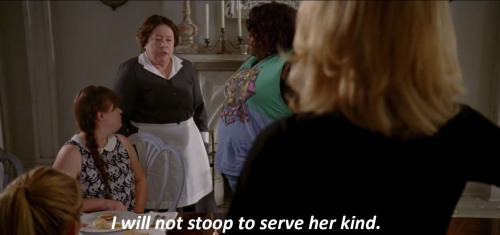

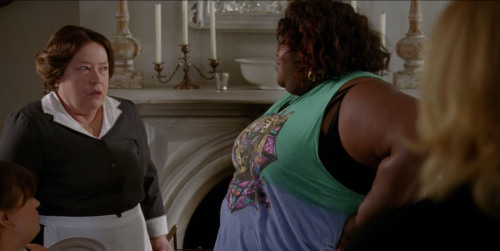
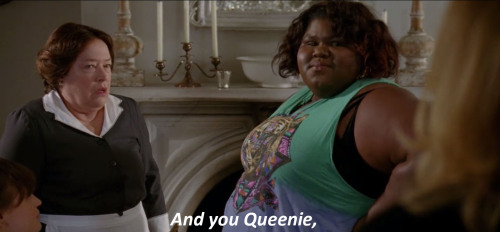

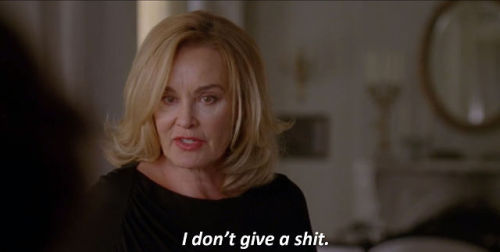
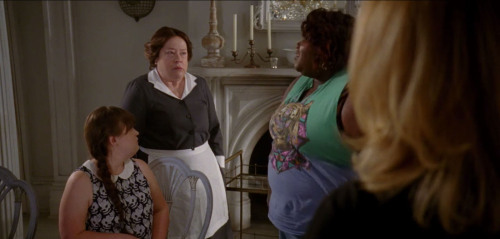

Conspiracies: Anthropology lenses
Discovering the dreaded conspiracy theory through an anthropological lens, these notes basically ask the question of where and how people created theories based on their mistrust of systemic agencies, or unexplainable events.
Prevention through Deterrence.
What is Prevention through Deterrence? It is a strategy that the U.S Border Patrol implemented to make border crossing as difficult, dangerous, and expensive as possible, ultimately aiming to redirect migrants routes into the most inhospitable sections of the border, basically making the hot desert a weapon to discourage migrants from attempting the crossing at all.

The U.S has made it abundantly clear that migration through crossing the border is illegal, making policies after policy to dismay the crossing, including Operation Streamline, a joint initiative of the Department of Homeland Security and Department of Homeland Security and Department of Justice in the U.S started in 2005 that adopts a ‘zero-tolerance’ approach to unauthorized border-crossing by criminally prosecuting them; up to 70 people, locked together in handcuffs through hands and feet are shown before a judge before being prosecuted and sent to the state jail, which affects the economy since all of the space being taken up is being paid at taxpayer’s expense, and destroys the judicial system because justice is not being served, and instead becomes corrupt.

But then how did this all start? Why are migrants crossing the border in the first place? Because of colonialism and domestic violence, that’s why. Back in 1944, the allies like the U.S, the U.K, and France, etc. would connect their banks to the dollar, or regular paper money, making it the BrettonWood Agreement. The colonies under such big world powers, around the ’50s wanted independence, which caused immense turmoil for the world powers. The colonies wanted to rise independently, and could only do that economically. A man by the name of Jacobo Arbenz was elected president of Guatemala; he was a great military officer and politician. At this time he had drawn a land reform, where he wanted the U.S who owned land in Guatemala that they weren’t using to pay taxes and give that fallow land back to the Guatemalan government for land distribution. The U.S felt like they were being bossed around, and didn’t like that this small country was forcing them to give up their land’, so they, under the company United Fruit decided they couldn’t control this man, so they killed him and set a man who became a dictator by the name of Carlos Castillos Armas in his place. A series of coups and new presidents/dictators after Armas’s four years. It was only in the ’80s of Guatemala do things go from bad to worse, with the presidency of Rios Montt, who believes he was appointed by God.

The guerillas, a small attack force that was taking part in action against a large force, in this case, Montt, were being hunted down, killed, and tortured. In Guatemala, there are white Spaniards, brown Spanish people, and then the indigenous tribes called the Maya; some of the Maya, who lived in small towns away from the city, wanted to join and stop Montt, who became a dictator at this point. He believed that since the Mayan people had joined against them, then all of the Mayan people were guerillas. He, with the help of the U.S government, started the Scorched Earth Campaign, which was the legal use of killing and destroying every Maya and anyone else who was associated with the Maya, or the ‘guerillas’. 626 villages were burned down, and over 1.5 million were displaced, with many of them being children (kill the seed, a strategy of destroying the Mayan tribe.) People would hide in the mountains or they would migrate to Mexico or other countries, some able to migrate to the U.S.
I mention Guatemala because in the ‘Imaginarium of migration’, what we in the U.S think about these people who are crossing the border believe they do not just come from Mexico here to ‘steal our jobs’. They come from Guatemala, Chile, Brazil, Venezuela, etc. all over, so they could have a shot at supporting their families, and learn and be somewhat educated, then hope to go back home. So no, not all migrants are from Mexico, and not all of them are criminals. Many people are traveling through the desert knowing the risks and the dangers and doing so on the basis of hope that they could get through, hoping to find border patrol. Yes, they want to find border patrol, because border patrol offers them food, water, and shelter from the heat of the sun and the dryness of the desert. But sometimes many people do not even get that far, and their deaths become ambiguous because again, they have no rights; hundreds, if not thousands are dying in the desert.

Colonialism and nationalism also play a big part in how the U.S writes immigration policy. ‘’Give me your needy, your tired and your poor’’ is a regular statement and not to be taken literally. The colonialist/capitalist mindset is that people can come to the U.S, they just have to be white and rich. State/space of exception is the concept where human rights are negated. There is a space where people are reduced to distribution, where they don’t matter enough for anything a person in the U.S might take for granted because they are ‘alien/illegal’. Since there are no laws to protect them, they have no rights to be protected. And the rise of nationalism is what we've been seeing a lot since the presidential campaigns of 2016 when Trump was stated into office. Nationalism is the ideology and movement that promotes the interests of a particular nation, especially the aim of gaining and maintaining the nation’s sovereignty over its homeland, in this case the U.S. Nationalism holds that each nation should govern itself, free from outside interference, that a nation is a natural and ideal basis for a polity, and that the nation is the only rightful source for political power. This is why racism, fascism, and classism always follow closely after.
Information from Jason De Leon’s book, ‘‘The Land of Open Graves.’’

-
 arieso226 reblogged this · 8 years ago
arieso226 reblogged this · 8 years ago
26-year-old Anthro-Influencer Anthropology, blogger, traveler, mythological buff! Check out my ebook on Mythology today👉🏾 https://www.ariellecanate.com/
208 posts
